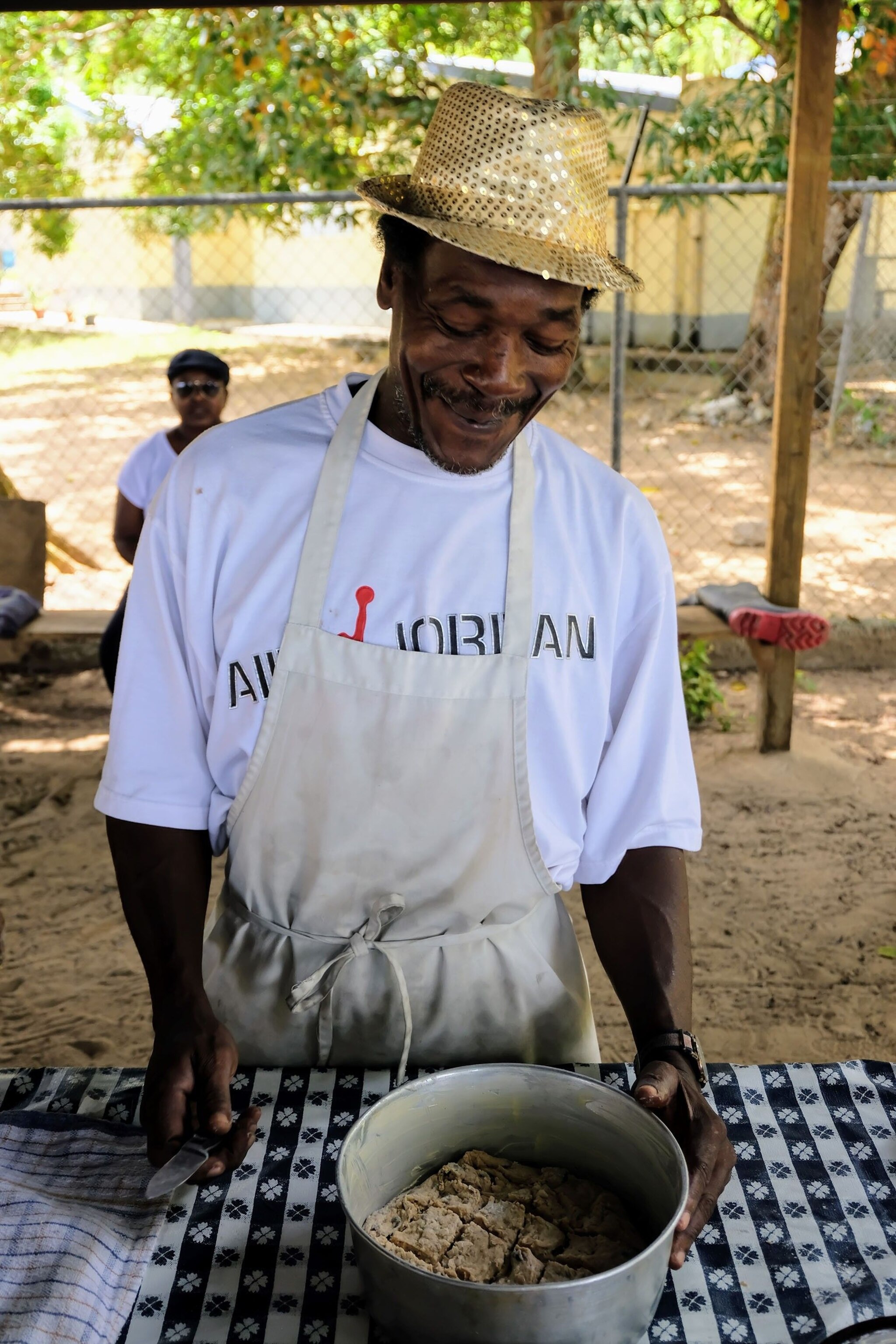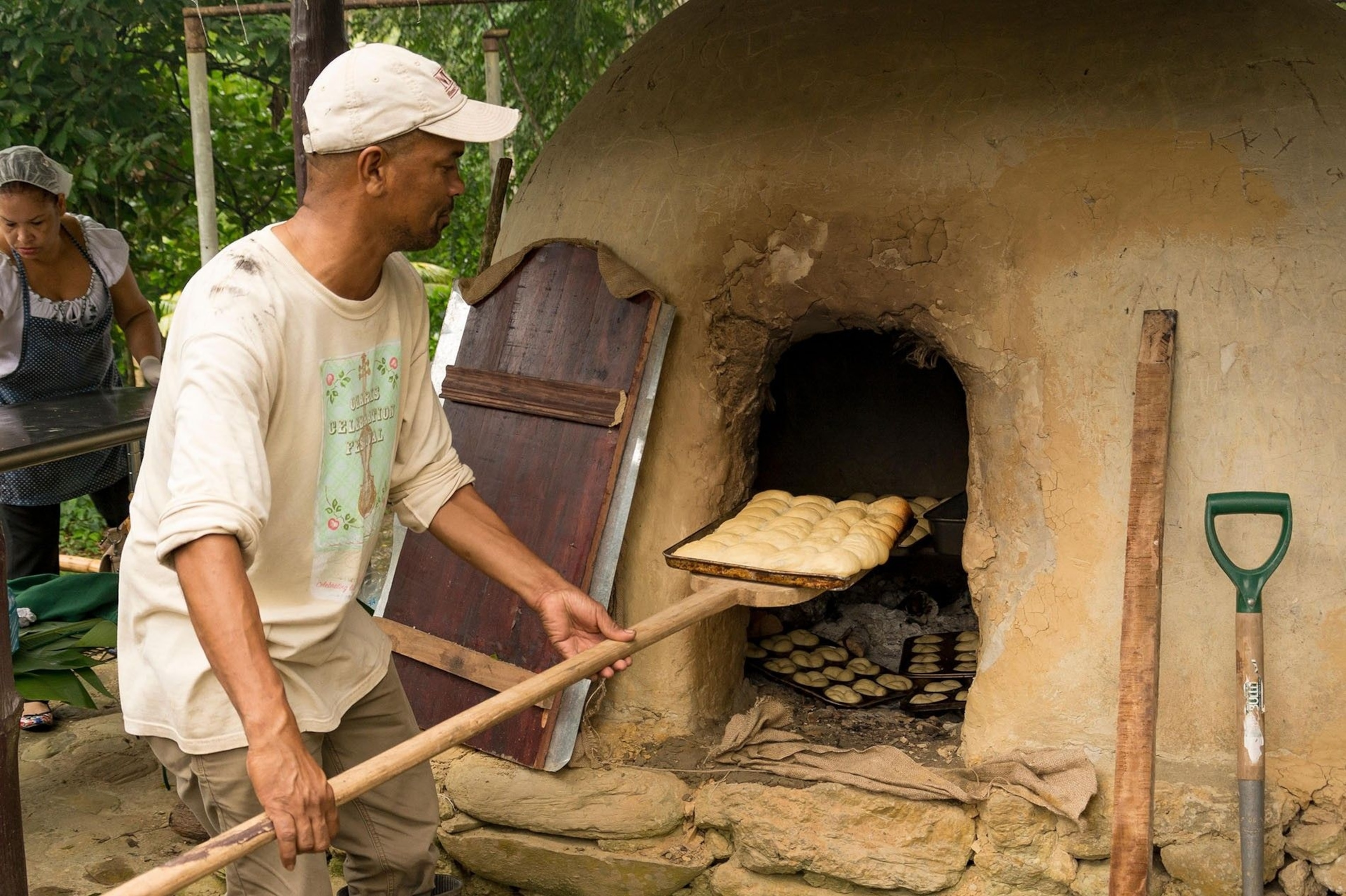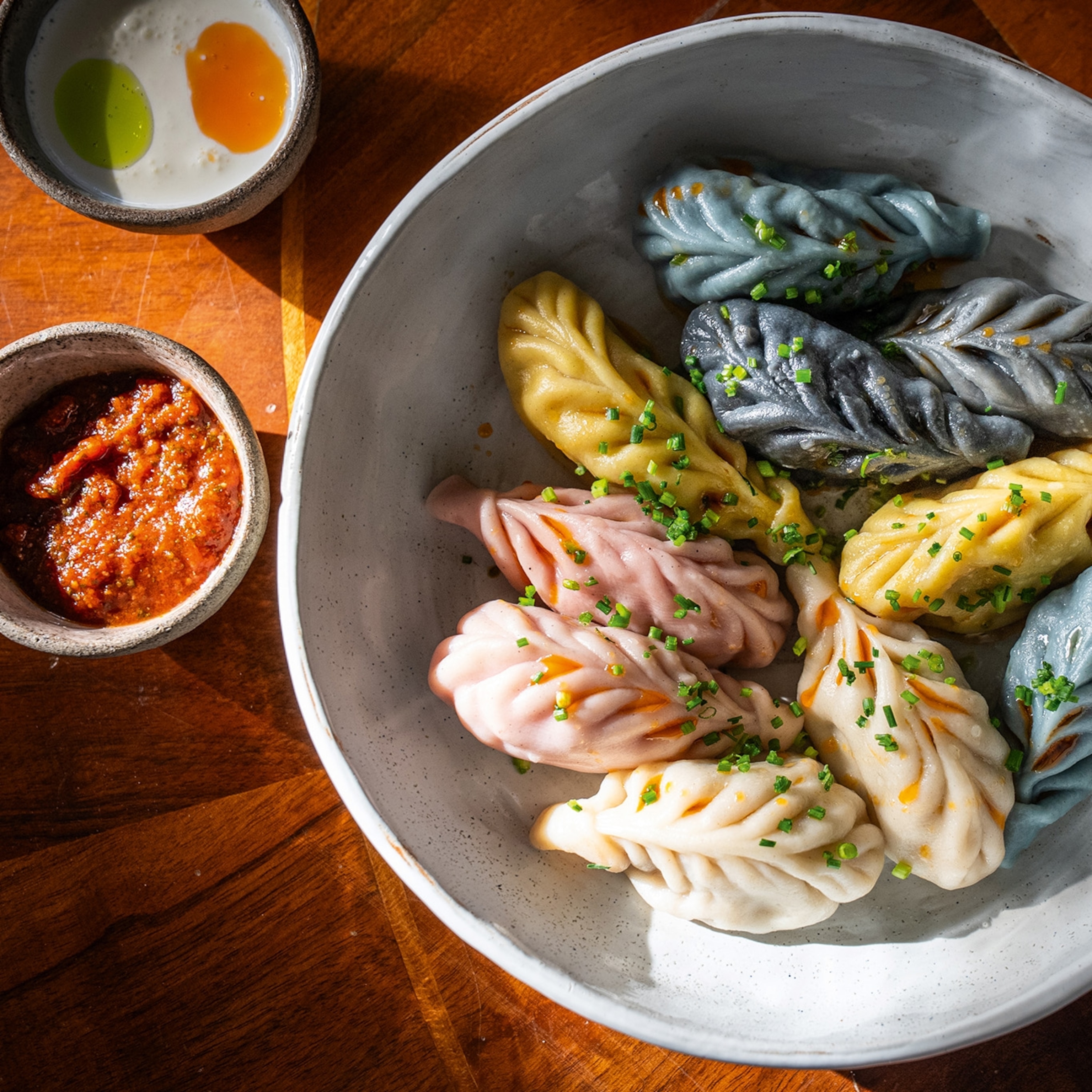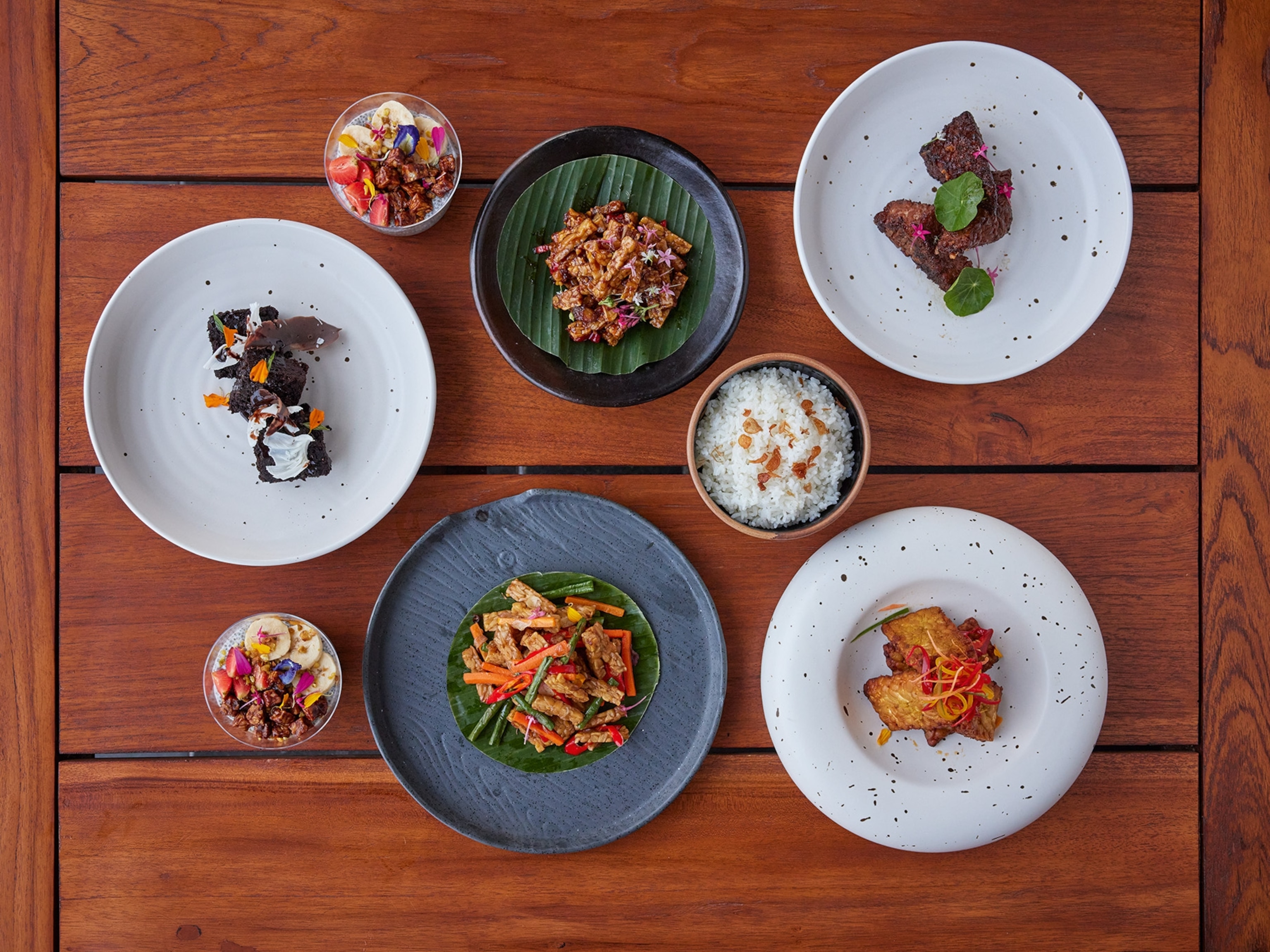
Tobago's food scene: the island where the clay oven is king
The art of baking on Tobago has been passed down through generations and is indicative of the island’s cuisine. Most recipes are age-old — full of hearty Caribbean flavours and spiced with tradition.
In the shade of a giant almond tree, Aliston Taylor is making bread. He and his fellow bakers have been industriously kneading, shaping and scoring dough since daybreak, working on tables set up on the sands of Castara Beach. “These will be our pumpkin breads,” he tells me, waving a hand over rows of sweet-smelling loaves, each wrapped in a balisier leaf and proving in the mid-morning heat. At another station, coconut tarts are laid out on trays, and tins of fruity sweet bread too. There must be a hundred cakes and loaves. All that’s left now is to bake them in the igloo-shaped clay oven behind us, which has just started belching orange flames. No one seems concerned, so I take it it’s all part of the process.
“This tradition for dirt ovens came down from our parents. It’s more special to make bread this way, out in the open,” Aliston explains. He built this oven himself and fires it up on Thursdays and Saturdays, taking orders throughout the morning from villagers. He tells me how he constructed the oven, crouching to draw a blueprint in the sand between us with a stick. “I laid the square concrete base like so, then made a circle with broken coconut shells. Next, I built it up with more shells and clay and sticks until there’s the dome you see.” The two little hatches are crucial for the heating process, he says: one’s for piling in the bamboo firewood and the other at the back is then used to remove the ash. “Once the clay is good and fire-hot, you have to get it swept clean for the bread,” he says, brandishing a long, leafy branch of black sage which he’d collected that morning for the task.

With the flames subsided and the glowing debris removed, the creations are placed into the oven, speedily, tray by tray, on a wooden paddle, and the two hatches sealed up. “Now we wait,” Aliston says, wiping his brow and giving me a cheery wink.
Cooking in Tobago is steeped in history. Most dishes are age-old Caribbean staples, with their providence in the natural bounty of the island and the sea. Others are legacies from European colonialists. Some, like doubles, the roadside snack of pillowy roti and chickpea curry, have their roots in Indian cuisine — a result of the indentured plantation workers that arrived from Bengal after the Emancipation Act.
In recent years, a resurgence of pride in Caribbean cuisine has seen Tobago’s chefs adding experimental twists on local dishes. “These ingredients were such staples growing up that as adults we didn’t want to see them again,” one diner tells me as he tucks into breadfruit pie at Jemma’s Treehouse, a homely Caribbean kitchen overlooking the Atlantic. “But now chefs are doing all these new things with them!” Tobago’s annual Blue Food Festival, held in October in Bloody Bay, is part of this trend. Two decades ago, a small community of chefs challenged themselves to concoct new recipes using the ubiquitous dasheen tuber, which turns bluish when boiled. Today, it’s a massive event attracting thousands of hungry locals and visitors, all looking to be surprised by the chefs’ ingenious menus, which have even stretched to dasheen ice cream.
Back under the almond tree, Aliston is dusting the leafy cocoons off the loaves and wrapping them in paper. There’s a queue of locals, one holding a jar of spread and another with a wrapper of cheese, ready and waiting to tear into the bread. A handful of travellers in their swimwear have approached the beach bakery too, drawn from their sun loungers by the aroma. I tuck into a hot coconut tart at the first opportunity, the soft dough seems to have absorbed the spices of the shredded fruit filling. It’s heaven. Aliston seems content. He settles into a chair in the shade near the oven and surveys his satisfied customers, all chatting and licking their fingers as they eat. “I’ve travelled to other islands, other places. The brain gets too hot out there: it’s busy. And no one knows you. They pass you on the street,” he tells me with a note of pity. “Here, we’re all about community. It’s a nice place to live, you know? And not just for us — for you too. You can feel it when you stay.”

Top three places to eat in Tobago
1. Jemma’s Treehouse, Speyside
A tree grows through the heart of this airy restaurant, built from wood in a traditional Tobagonian style and set on stilts beside the Atlantic. Its windows offer sweeping views across the water to the nearby islets of Goat Island and Little Tobago, home to nesting colonies of seabirds and fantastic dive sites. Jemma’s is famous for its home-style, local cooking. The portions are big, and the seafood is fresh and divinely seasoned. The unmissable pièce de résistance is her cheesy breadfruit pie.
2. The Blue Crab, Scarborough
The Sardinahs’ pretty restaurant is famous on the island for its colourful Carribean cuisine. But while guests might come for Kenneth’s flavoursome cooking, they’ll return for the flare and humour Alison brings to hosting. The couple have celebrated their 50th anniversary and have been running The Blue Crab for over 30 of those years. Book a table and opt for the set menu, which can include local dishes like crab chowder, butter shrimp, island style lamb and flying fish — best washed down with a homemade lime juice.
3. Seahorse Inn, Black Rock
The restaurant’s elegant setting, on a lamplit terrace surrounded by palms and overlooking the ocean, lends itself to romantic dinners. The chef draws inspiration from European, Asian and Caribbean traditions to create sophisticated dishes, and the extensive cocktail menu makes the Seahorse Inn a great spot for a sundowner. Reserve a table near the ocean to enjoy sunset and the sound of the waves.
For more information visit visittobago.gov.tt
Follow National Geographic Traveller (UK) on social media






